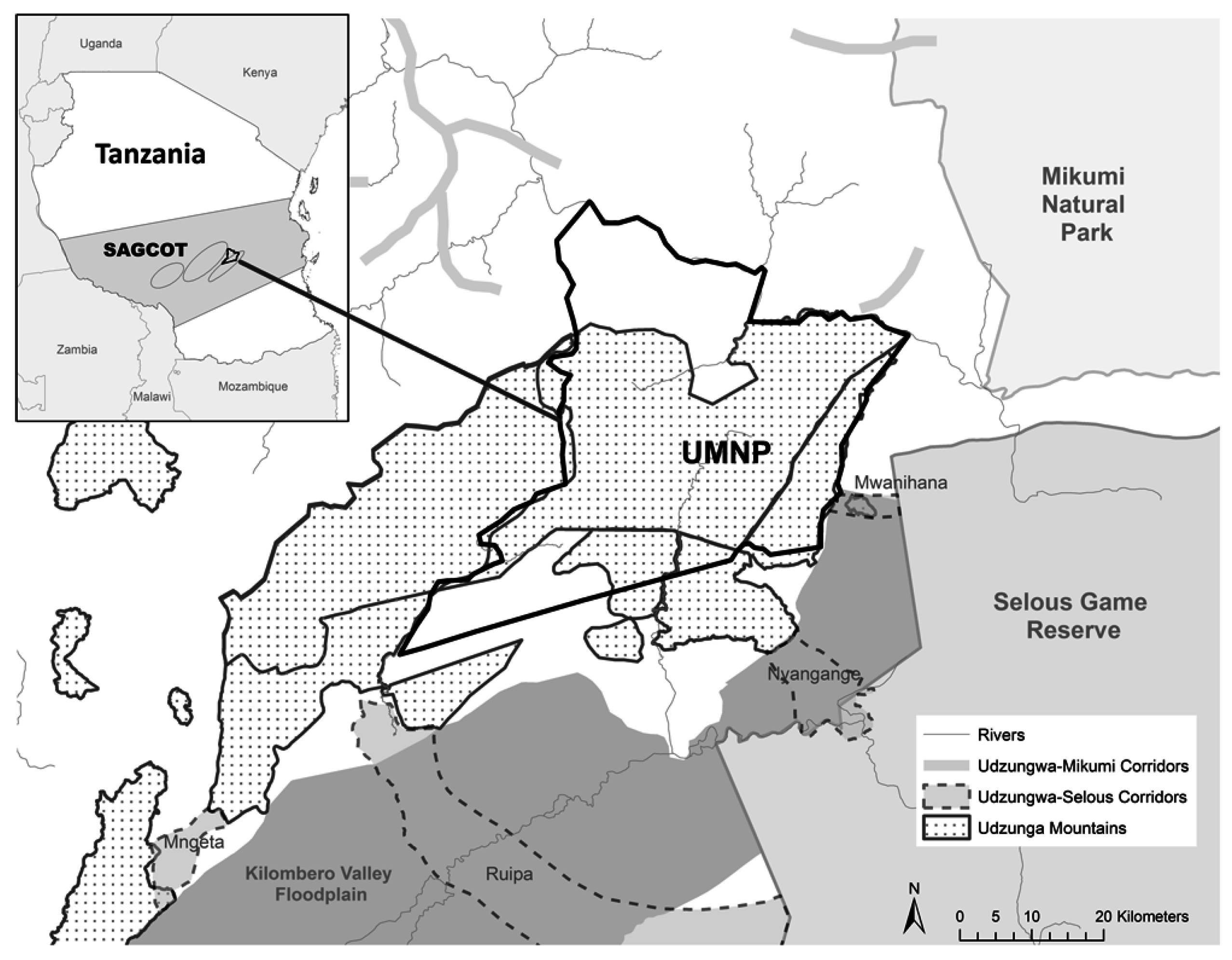Udzungwa Mountain National Park is perhaps Tanzania's most important park in terms of diversity. It forms part of the Eastern arc rift valley and an ancient forest that once stretched along the entire length of the Eastern Rift. All that remains today are a few remnant island patches of this ancient rainforest that have evolved through the millennia so that today Udzungwa is brimming with endemic species found no where else. Scientists are still getting excited about new discoveries in Udzungwa at every level from plants through birds and butterflies to mammals etc. The most recent discoveries in the last couple of years have included the Kipunji monkey (the first new genus of monkey for 83 years) and a Giant elephant shrew - a foot long and the first genus discovered for 125 years!
Udzungwa is a remnant of the eastern arc rainforest that used to stretch along the eastern rift. 165 million years ago Madagascar separated from the mainland such that the forests there have similarities to the Udzungwa rainforest. While 6 million years ago the Udzungwa rainforest was isolated from the West African rainforests so that there exists a high degree of endemism with 25% of the plants being unique only to Udzungwa.
Of the ten primates that are found in these forests four are endemic only to Udzungwa including the Red Hehe Colobus and the Crested Mangaby. There are also a couple of endemic Galagoes (bushbabies), several endemic birds including the Rufous Winged Sunbird and Udzungwa partridge. The discoveries of new species is an on going affair with 2 completely new genera of mammal being identified in the last 8 years. The Giant Elephant Shrew, also called 'Sengis' was first caught on film in 2005. Different to a European shrew, this 1ft long creature is more closely related to African mammals including the elephant, Sea cow, Aardvark and Hyrax, having shared a common ancestor 100million years ago.
The second recent discovery is of the Kipunji Monkey, which is a baboon sized animal, grey in colour. This was noted by scientists in both the Rungwa area and Udzungwa but not formally identified until 2006. With three nights in Mikumi at either of the above camps there is time for a full day of trekking in Udzungwa Mountain National Park walking under the canopy rainforest and endemic primates and birds to emerge at Sanje Water falls with spectacular views over the rift valley below. The walk is relatively steep and not suitable for young children or visitors with a medical or mobility condition.
